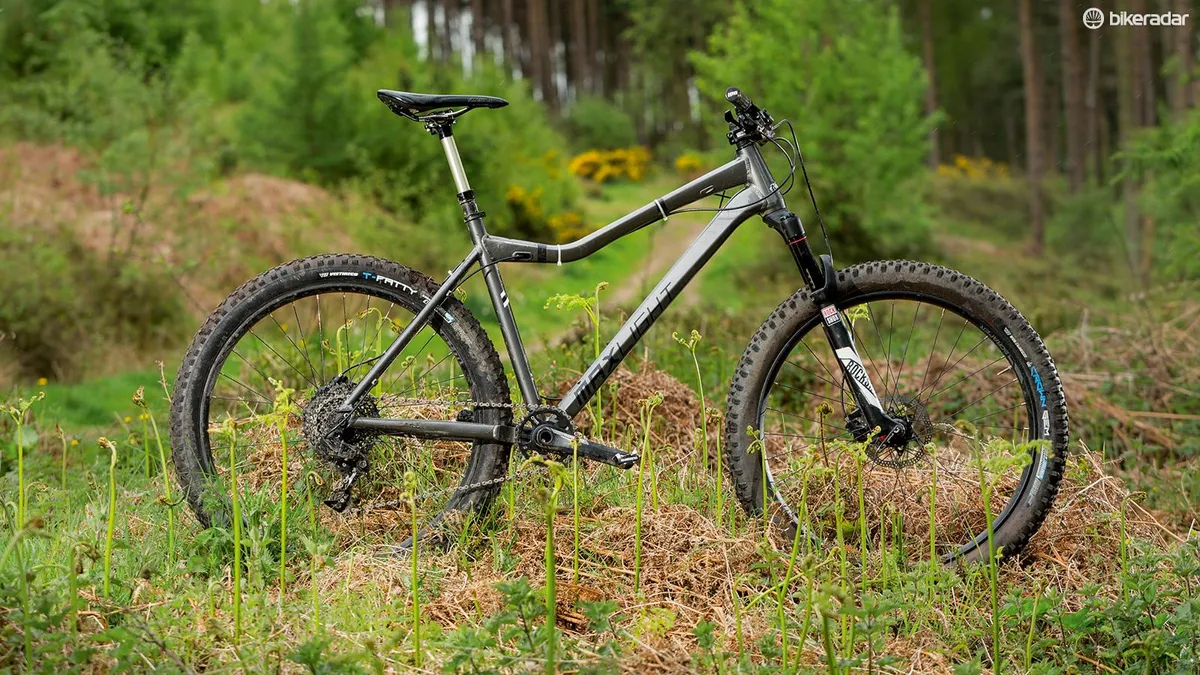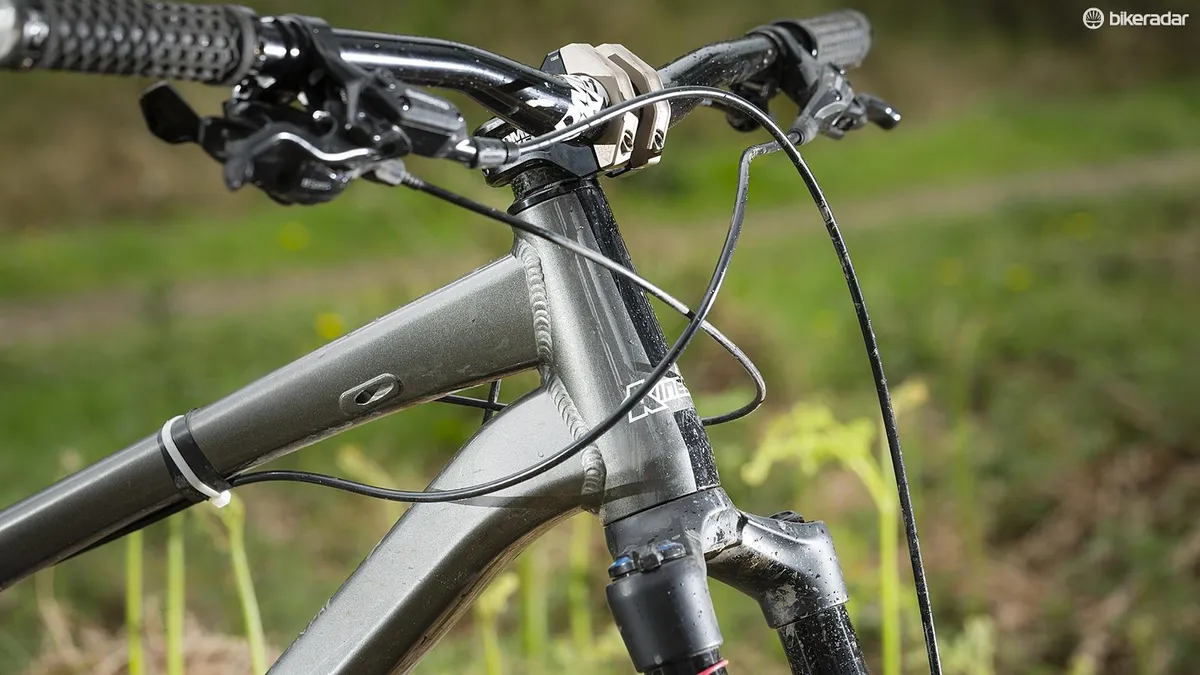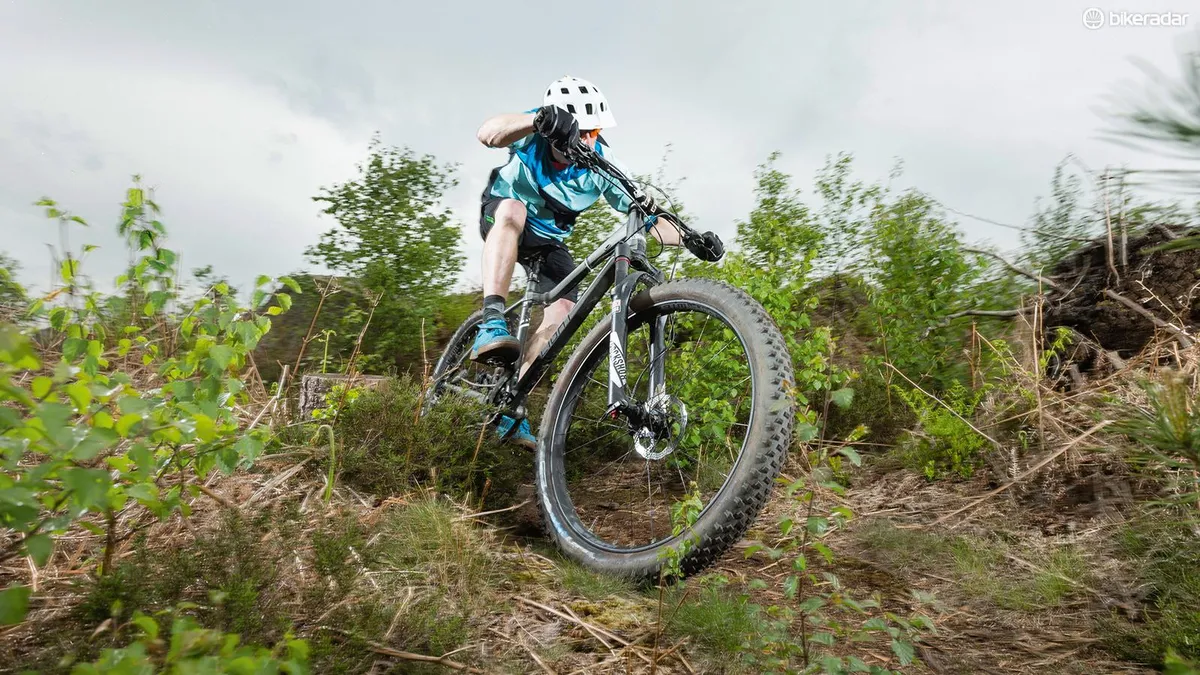Kinesis’s Maxlight Phase hardtail is designed to cover all the latest ride style and wheel trends in one package, and the affordable alloy frame is loaded with neat details. The distinctive geometry creates some strong pros and cons though.
Light, modern alloy frame
The Phase is a good showcase of Kinesis’s high-temperature ‘Super Plastic Formed’ (SPF) tube shaping. Each tube runs through multiple shapes and the ‘Surge’ stays splay out to 148mm Boost width at the rear.
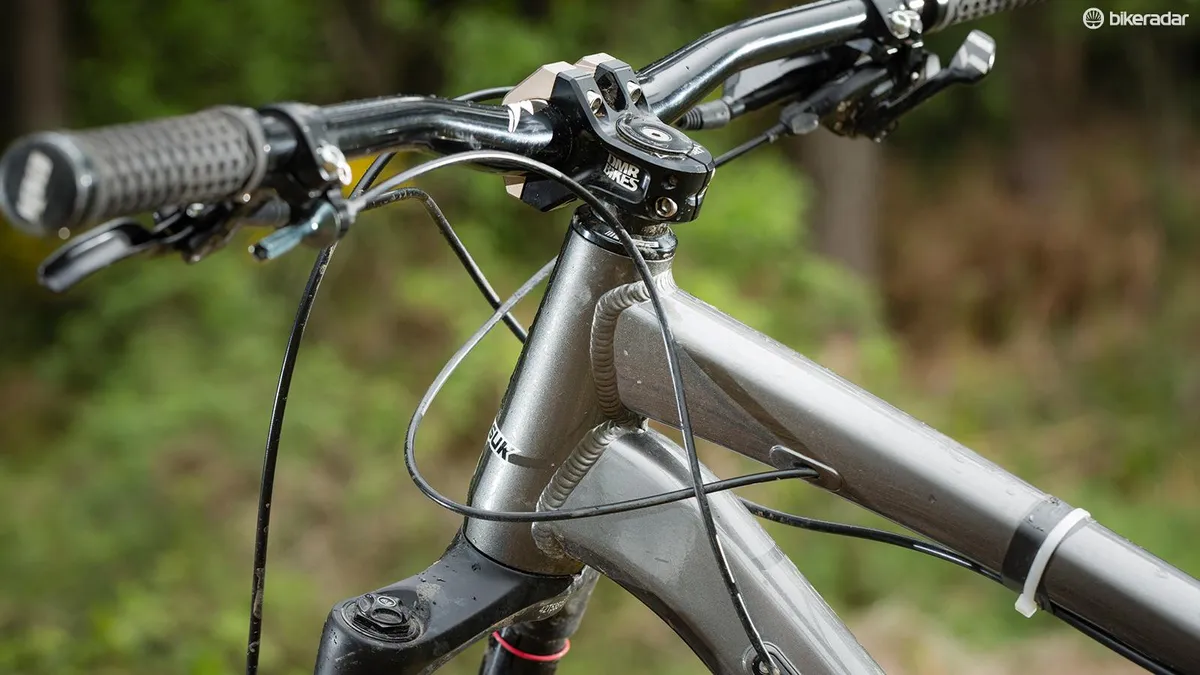
A machined driveside chainstay yoke means ample clearance for plus-size rubber and Kinesis’ designers have rigged the internal top tube control routing for a left-hand rear brake lever. The bottom bracket is the good old-fashioned threaded style too.
The 1.8kg weight of the large frame gives a good balance of responsiveness and strength, and saves almost a kilo over some steel-framed rivals. It’s only available in three sizes, and a single titanium-grey finish.
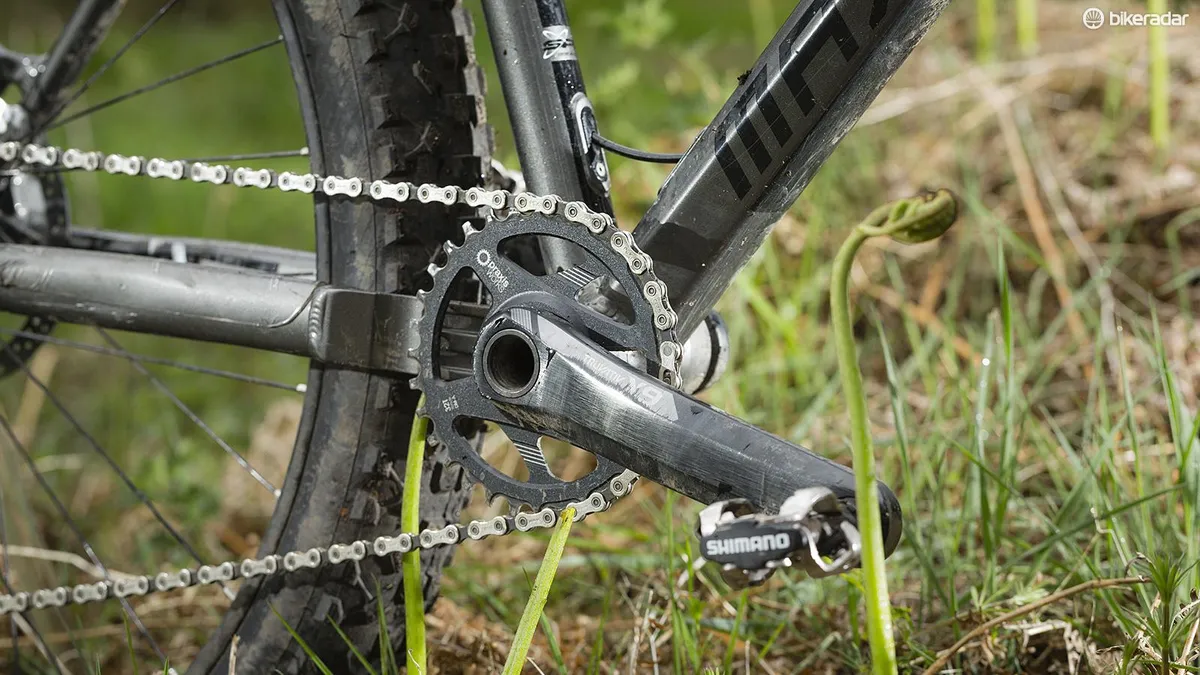
The Phase is only available as a frame, and you could build it up a lot lighter than our test bike (see below for full spec as tested). You can fit 650b, 650b+ or 29in wheels into the frame – though the geometry isn’t so versatile.
Not the most balanced ride
That’s because while most dual-wheel-size ‘plus’ bikes are switchable between 27.5+ and 29in wheels/tyres, Kinesis have designed the Phase around 27.5 and 27.5+. As a result, the BB sits more than 340mm off the ground with plus-size tyres fitted – the sort of ground clearance we’d expect on a 160mm travel full-susser that would sag 20mm as soon as we sat on it.
This means you get a ton of crank clearance on rocky/rutted trails. Add the super-grippy plus tyres and the Phase is a monster on out-of-the-saddle technical climbs.
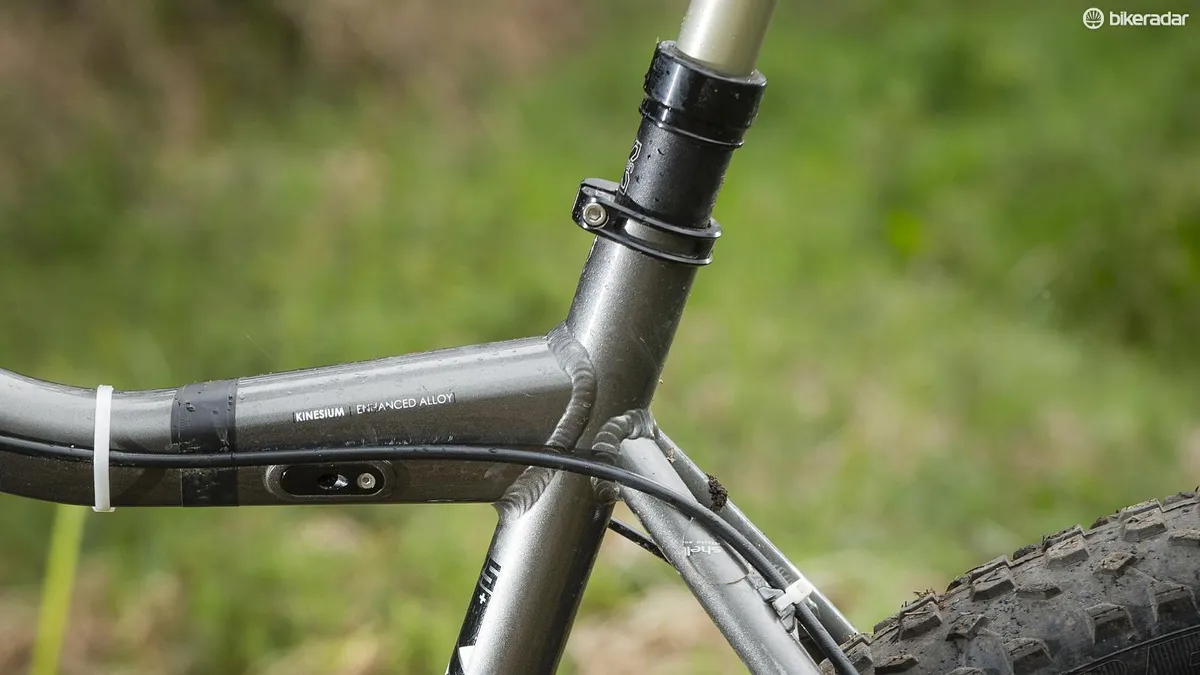
The slack (we measured it at 71.5 degrees, not the listed 72.5) seat angle and short 425mm reach lighten the front end too. This is great for tickling the Phase through really tight situations, and despite the super-slack 66-degree head angle, the front tyre never felt stubborn or hard to twist on its contact patch like it does on some plus bikes.
That same rearward weight distribution makes it hard to stop the big front tyre scuffing off line on seated climbs though. Together with the tall BB it also leaves the bike lacking in high-speed stability when things get fast and loose, and it feels precariously perched if you stall on a rocky ridgeline.
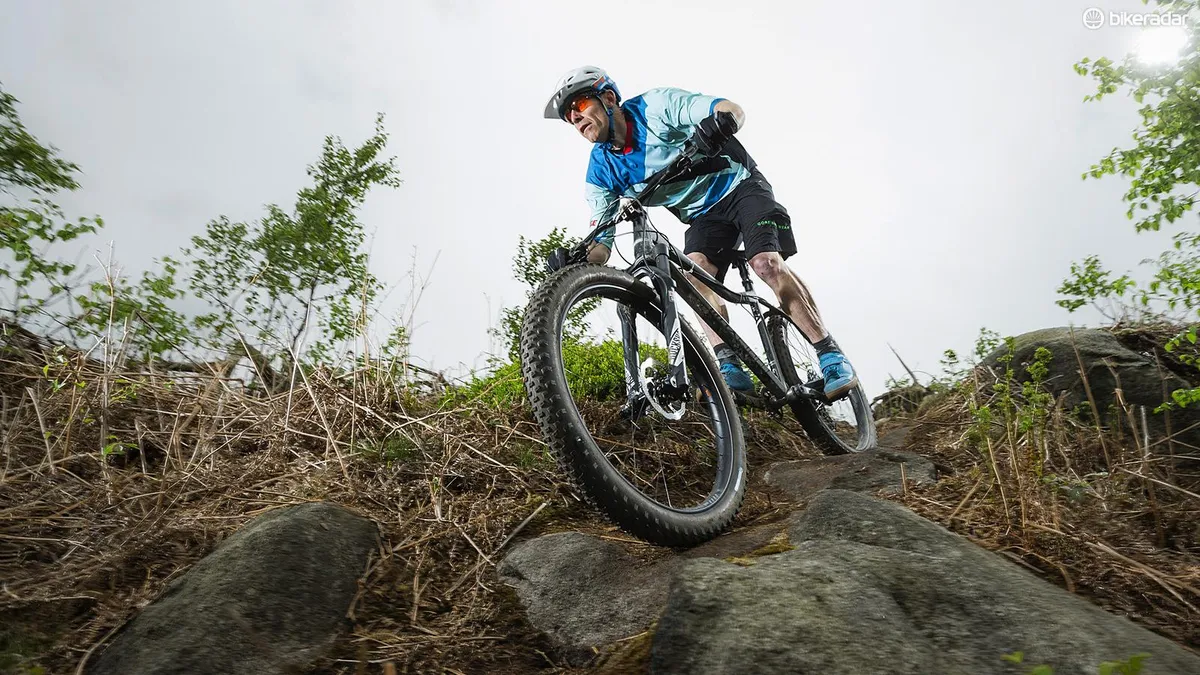
With 650b wheels and 2.3in tyres fitted the Phase still had the same slack but backward-weighted short reach geometry, but with a 325mm BB height we didn’t feel so exposed. That’s with the same 120mm fork rather than Kinesis’s recommended (for 650b tyres) 140mm fork, which would create an even slacker set of angles and a BB height of 335mm.
If you’re comfortable with the geometry – and it does have real advantages on tight and technical pedally trails where low-slung bikes sump out all the time – the SPF tubeset delivers a well-mannered mix of fatigue-reducing forgiveness (for an alloy hardtail, at least) with enough punch and precision to get the big tyres moving and guide them through gaps that they naturally make smaller.
Spec as tested:
- Frame: 6000 series aluminium alloy
- Fork: RockShox Yari RL, 120mm (4.7in) travel
- Shock: None
- Drivetrain: SRAM X1 with X9 cranks and Praxis Works chainring (1x11)
- Wheelset: WTB Scraper rims on Kinesis Maxlight hubs
- Tyres: Vee Crown Gem 27.5x3in (f) and Fatty-T 27.5x2.8in (r)
- Brakes: Shimano Deore M535
- Bar: DMR Wingbar, 780mm
- Stem: DMR Sect, 40mm
- Seatpost: X-Fusion HiLo Strate (dropper)
- Saddle: DMR Stage 1
- Weight: 13.63kg (30.05lb), large size without pedals
